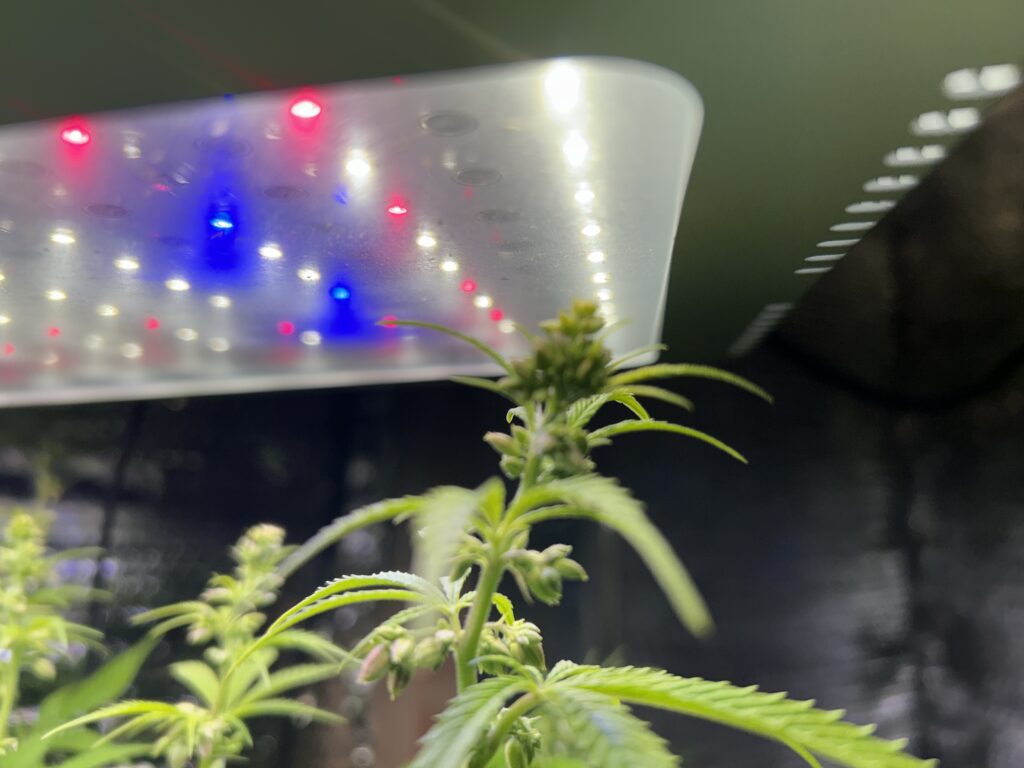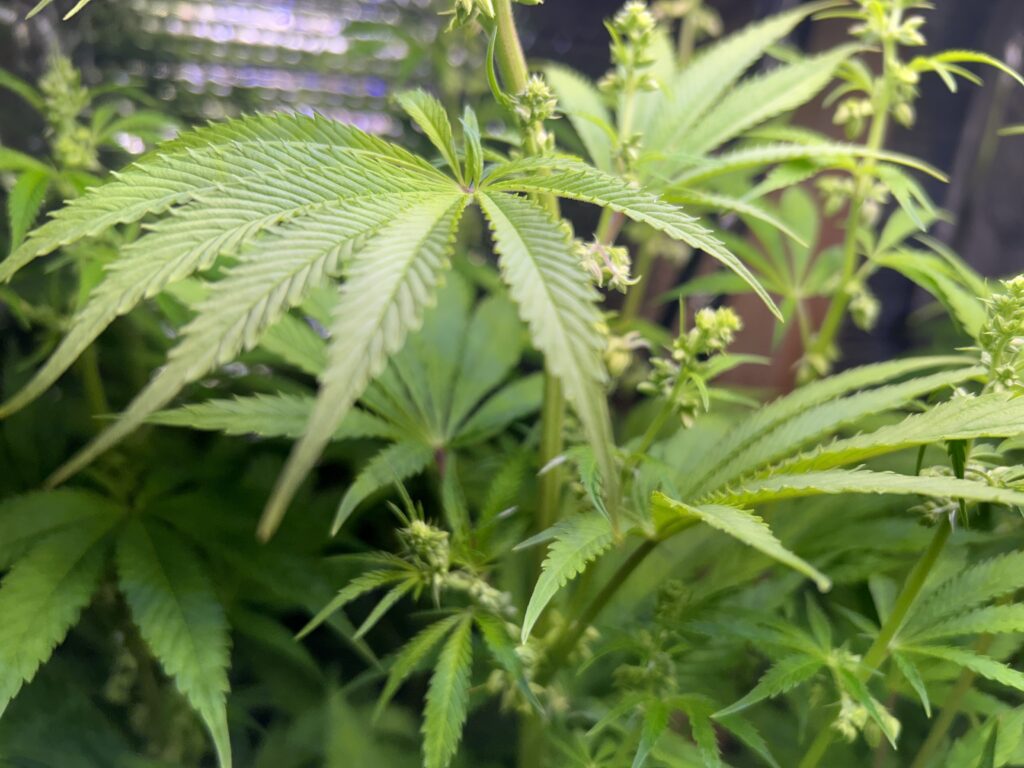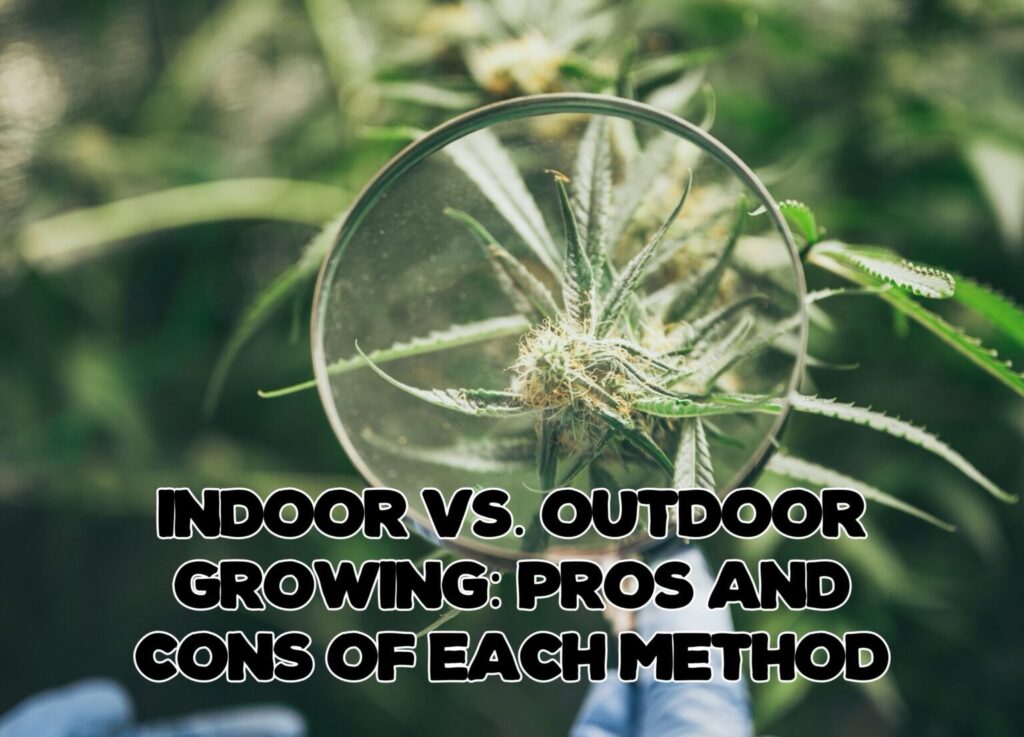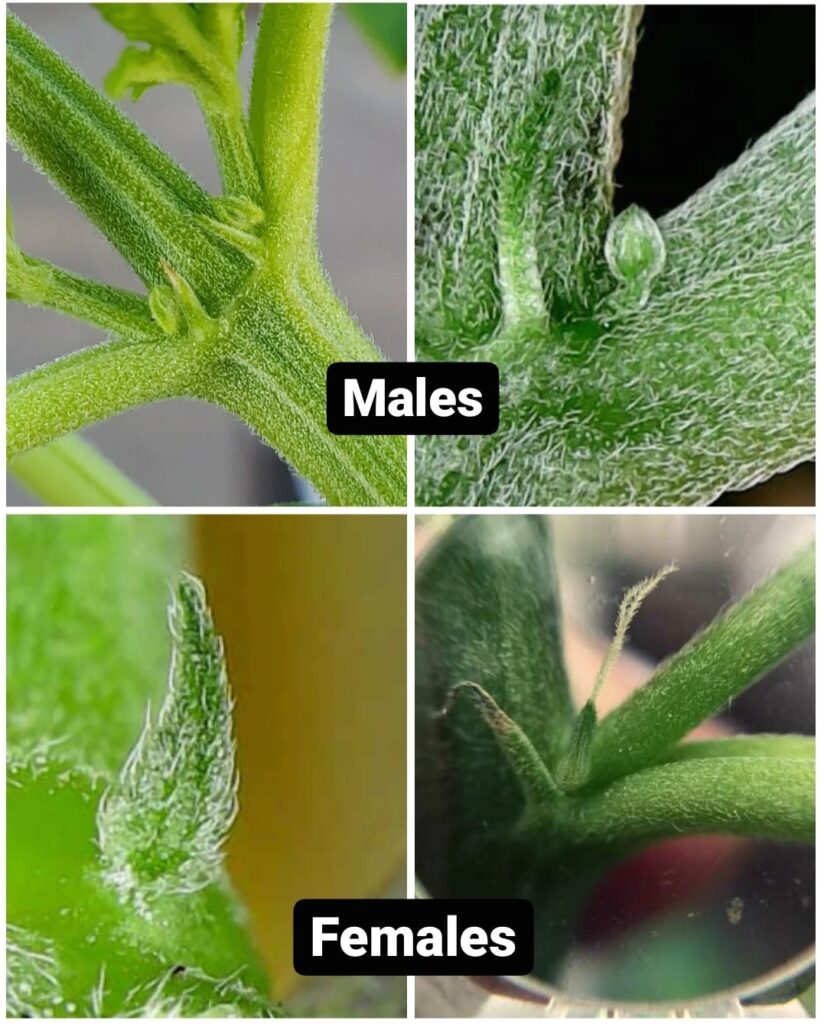
The Surprise in Your Garden
So, you’ve been nurturing your feminized cannabis seeds with the love and attention of a helicopter parent at a playground, expecting a bountiful harvest of female plants. Then, one fine morning, you stroll into your garden only to find… pollen sacs? Yes, those little traitors have appeared where you were expecting lovely, resinous buds. It’s like throwing a gender reveal party and the cake says, “Guess again!”
This twist in your grow season might feel like a plot twist in a sitcom, but it’s actually a common hiccup in the world of cannabis cultivation. Feminized seeds are supposed to take the guesswork out of growing, ensuring that almost every plant is female. Almost. Nature, however, loves a good laugh and sometimes throws a curveball.
But fear not! This isn’t just a tale of woe. Much like the unexpected style and humor of The High as a Kite Marijuana T-shirt, your gardening mishap comes with its own blend of learning and coping strategies. Let’s dive into why your feminized seeds might pull a fast one on you and turn male, and what you can do to handle this botanical bait-and-switch.

Why Did My Feminized Seeds Turn Male?
You bought feminized seeds, so why are you staring down a garden of potential pollen donors? Let’s unpack the mystery behind these gender-bending plants.
The Science of Feminization
Feminized cannabis seeds are crafted to produce only female plants. This is typically achieved through a process involving colloidal silver or similar chemicals, which suppresses male chromosome expression. It’s a neat trick, but like any good magic trick, it doesn’t always go as planned.
Genetic Slip-Ups
Occasionally, a genetic quirk slips through, much like that one sock that escapes from the laundry. Despite breeders’ best efforts, a small percentage of feminized seeds might still harbor the potential to develop male characteristics, especially under stress. It’s not common, but it happens enough to be a known issue in cannabis cultivation circles.
Environmental Stressors
Stress is a major player in the cannabis gender arena. Plants that are stressed from factors such as extreme temperatures, improper watering, or nutrient deficiencies might switch genders. It’s their survival mode kicking in—an attempt to perpetuate the species when conditions get tough. This botanical phenomenon is known as hermaphroditism, where plants develop both male and female reproductive structures.
To understand how crucial environment is in cannabis cultivation, consider how proper air circulation and germination practices can make or break your grow operation. For more on this, check out The Importance of Proper Air Circulation and Germination in Cannabis Cultivation, which delves into the environmental essentials for healthy plants.
By recognizing these triggers and managing your grow environment carefully, you can reduce the likelihood of your feminized seeds turning rogue. Next up, we’ll cover how to spot these undercover males before they can wreak havoc on your horticultural dreams. Stay tuned for the signs to watch out for!

Identifying Male Traits in Cannabis Plants
When it comes to cannabis cultivation, knowing your plant’s gender as early as possible is crucial. Spotting male characteristics early can save you a lot of trouble and prevent a garden full of seeds instead of sinsemilla (seedless cannabis). Here’s how to catch them red-handed before they can spoil the party.
Look for the Telltale Signs
Male cannabis plants show their true colors early in the flowering stage. Unlike females, which develop sticky, resinous buds, males produce little pollen sacs. These sacs look like tiny balls or bunches of grapes and are the harbingers of pollen ready to spread to female plants. Recognizing these early can feel a bit like finding a walnut in a bag of grapes—unexpected and definitely not what you signed up for.
Timing is Everything
Male plants typically show their pollen sacs before females start to flower. This timing is key to preventing unwanted cross-pollination. If you’re vigilant, you can remove these potential troublemakers from your garden before they have a chance to spread their pollen.
Using Technology to Assist
If you’re serious about your cannabis cultivation, consider investing in a small microscope or jeweler’s loupe. These tools can help you take a closer look at the early flower formations, letting you distinguish between the fine hairs (pistils) on female plants and the smoother, ball-like structures on males.
By being proactive and keeping a keen eye on your plants during the early flowering phase, you can effectively manage your garden’s gender dynamics. This vigilance ensures that your female plants remain unpollinated, leading to the high-quality, potent buds that every grower aims for.
Next, we’ll dive into what you should do if you find these sneaky male plants hiding among your supposed all-female crop. Don’t worry, there’s a strategy for every problem in the garden!

Immediate Actions to Take
Discovering male plants in your feminized cannabis garden can feel like finding a wolf in sheep’s clothing. Here’s what you need to do the moment you spot those unwelcome pollen sacs to safeguard your harvest.
Isolation or Removal?
The first and most crucial decision is whether to remove or isolate the male plants. If your primary goal is potent, seedless buds, removal is your best bet. This means uprooting the male plants entirely to prevent any risk of pollination. Think of it as removing the party crasher before the dance floor gets too crowded.
Considering Breeding?
If you’re intrigued by the idea of breeding your own strains or perhaps need pollen for future cross-breeding, isolation might be the way to go. Move the male plants to a separate area far from your female plants. This allows you to collect pollen without risking your entire crop. Remember, cannabis pollen can travel far and wide on the breeze, so physical distance and careful containment are key.
Monitor the Rest
After dealing with the immediate threat, keep a vigilant eye on the rest of your plants. Sometimes stress can trigger other plants to develop male characteristics unexpectedly. Regular checks will help you catch and manage any new surprises.
Learn from the Experience
Each growing season is a learning opportunity. Review what might have led to the development of male plants. Could it have been environmental stress, or perhaps a genetic fluke? Understanding these factors can help you adjust your cultivation practices for future grows.
For those looking to turn their growing pains into growing gains, diving into deeper knowledge is crucial. Consider reading up on Mastering Cannabis: Secrets to Growing Potent Buds Revealed, where you can find expert tips and strategies to enhance your cultivation skills.
Next, we’ll explore some preventative measures and best practices to help ensure that your next crop of feminized seeds remains true to form, keeping those males at bay! Stay tuned for more green-thumb wisdom.

Preventing Future Surprises
No grower wants to face the same issue of unexpected male plants repeatedly. To prevent a repeat performance, here are some best practices and preventative measures you can take to ensure your feminized cannabis seeds live up to their promise.
Choose Reputable Seed Banks
The quality of the feminized seeds you purchase can vary significantly depending on where you get them. To minimize surprises, always buy your seeds from reputable seed banks. Look for suppliers with excellent reviews and robust quality control processes. A reliable seed bank will reduce the chances of genetic mix-ups and ensure the seeds’ femininity.
Optimize Your Grow Environment
As we’ve discussed, stress can cause cannabis plants to develop male characteristics. Ensuring your grow environment is stable can help prevent this. Maintain consistent light cycles, proper nutrient levels, and ideal temperature and humidity conditions. Reducing environmental stress keeps your plants happy and more likely to stay true to their genetic programming.
Regular Monitoring and Care
Staying proactive in monitoring your plants throughout their growth cycle is essential. Watch for early signs of stress or gender confusion and address them promptly. This includes adjusting your care regimen based on the plant’s responses to their environment.
Education is Key
Continuously educating yourself on the latest cannabis cultivation techniques can make a significant difference. Understand the nuances of strain genetics, environmental factors, and advanced breeding techniques. For a deeper dive into crafting the perfect growing conditions, exploring resources like The Importance of Proper Air Circulation and Germination in Cannabis Cultivation can offer valuable insights.
Implementing these strategies will not only help prevent future occurrences of feminized seeds turning male but also improve the overall health and yield of your cannabis garden. With careful selection, diligent care, and ongoing education, you can look forward to seasons of successful and satisfying cultivation.
Next, we’ll wrap up with some final thoughts on how to make the most of your growing experience, ensuring each season is better than the last. Stay tuned for our conclusion where we tie all these tips together for your ultimate growing success!

Aftercare and Optimization
Now that you’ve navigated the surprise of finding male plants in your feminized crop, it’s time to focus on aftercare and optimizing your cannabis garden for future success. Ensuring your plants remain healthy and productive involves more than just removing unwanted males; it’s about refining your cultivation practices to produce the best possible results.
Harvesting and Curing for Maximum Potency
When your plants reach the flowering stage without male interruptions, the next crucial steps are harvesting and curing correctly. These processes greatly influence the potency and flavor of your final product. For best practices on harvesting and curing that ensure maximum potency and rich flavor, check out Harvesting and Curing Cannabis: Best Practices for Maximum Potency and Flavor. Proper curing can make a significant difference, turning good buds into great ones.
Enjoying the Fruits of Your Labor
Once your cannabis is cured, it’s time to enjoy the fruits of your labor. If you’re looking for a quick and satisfying way to enjoy your harvest, you might be interested in learning some cheap, fast, and easy ways to roll cannabis joints. This guide provides simple techniques to get you from bud to bliss as efficiently as possible.
Continuous Learning and Improvement
Each growing cycle is an opportunity to learn and improve. Take notes on what worked and what didn’t, adjusting your methods as necessary. Engage with the growing community, share experiences, and keep up with the latest growing technologies and strategies. The more you refine your process, the better your results will be.
Can You Tell if Cannabis Seeds are Female Just by Looking at Them?
A common question among cannabis cultivators is whether it’s possible to distinguish female seeds from male seeds just by examining them. This would be incredibly useful, as it could potentially save a grower from dedicating time and resources to raising plants only to find out they are male. Here’s what you need to know about identifying the sex of cannabis seeds through visual inspection.
The Reality of Visual Identification
Unfortunately, the short answer is no: there is no foolproof way to visually determine the sex of a cannabis seed. Cannabis seeds do not show external signs that indicate their gender. Both male and female cannabis seeds appear identical in size, shape, and color. Any myths or claims suggesting that there are visual clues, such as size or pattern differences, are not scientifically supported.
Why Can’t You Tell the Sex from Seeds?
Cannabis plants are dioecious, meaning they develop into either male or female plants. However, the sex is determined by genetics from the X and Y chromosomes—similar to how human genders are determined. The seed itself only reveals its sex once it matures into a plant and starts to flower, which is influenced by its genetic makeup and environmental factors.
What Options Do Growers Have?
Since you can’t determine the gender by looking at the seed, here are a few strategies that growers use to ensure a predominantly female crop:
- Feminized Seeds: The most reliable way to grow female plants is to start with feminized seeds. These seeds are specially bred to produce female plants at a rate of about 99%. They are created by inducing a female plant to produce pollen and then using this pollen to fertilize another female.
- Cloning: Another method is cloning, where growers take cuttings from a known female “mother” plant. Each clone is genetically identical to the mother and will also be female.
- Sexing Early: Growers can plant regular seeds and wait until the pre-flowering stage to sex their plants. This stage occurs a few weeks into the grow cycle before full flowering begins. Male plants can be identified and removed early, allowing the grower to focus resources on the female plants.
While you can’t tell the sex of cannabis seeds just by looking at them, using feminized seeds or clones from a female plant are effective strategies to ensure a female crop. For those growing from regular seeds, paying close attention to the early growth stages will be crucial for identifying and removing male plants to prevent pollination.
Understanding these aspects of cannabis cultivation helps growers make informed decisions, ensuring their efforts yield the desired results. For further reading on maximizing the potential of your cannabis plants, consider exploring resources like Mastering Cannabis: Secrets to Growing Potent Buds Revealed, which offers advanced tips and strategies for both new and experienced growers.
Stay Updated
As the cannabis industry evolves, so do the techniques and technologies for growing it. Staying informed about the latest advancements in cannabis cultivation will help you adapt and thrive. Whether it’s new lighting systems, nutrient formulas, or cultivation techniques, the learning never stops.
By implementing these aftercare and optimization strategies, you’ll ensure that each grow cycle is more informed and effective than the last. Here’s to many successful harvests and the deep satisfaction of mastering the art of cannabis cultivation!
This concludes our journey through dealing with unexpected male plants from feminized seeds. With these insights and tips, you’re well-equipped to manage, optimize, and enjoy your cannabis growing adventures. Happy growing!
As an Amazon Associate we earn from qualifying purchases through some links in our articles.




